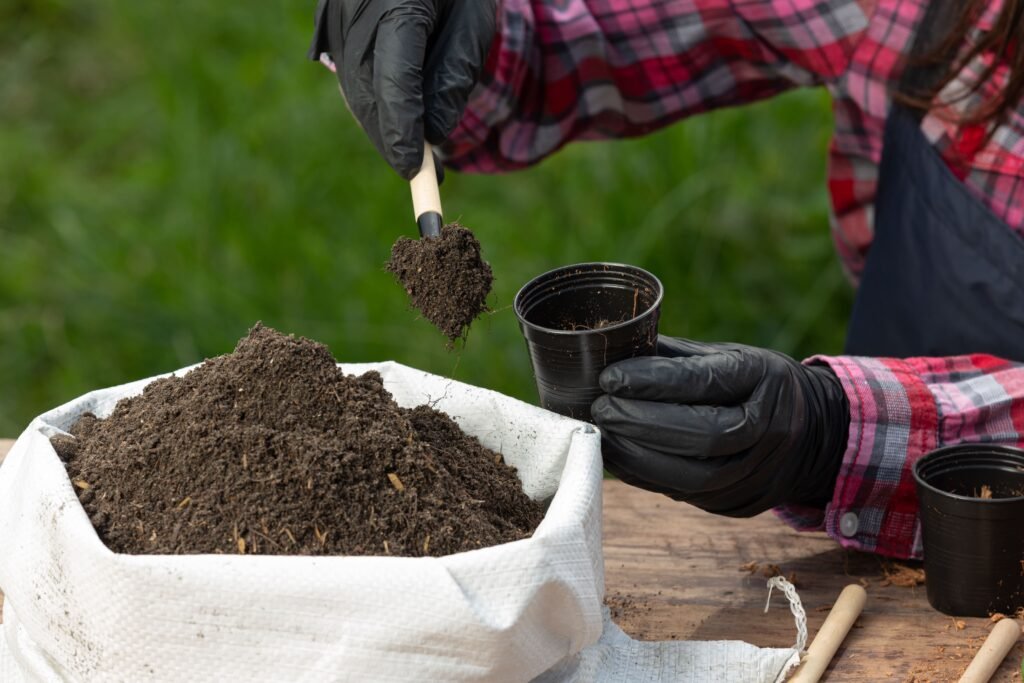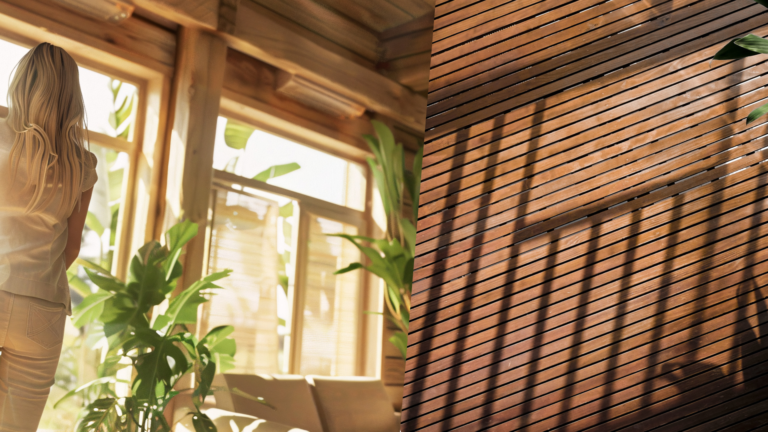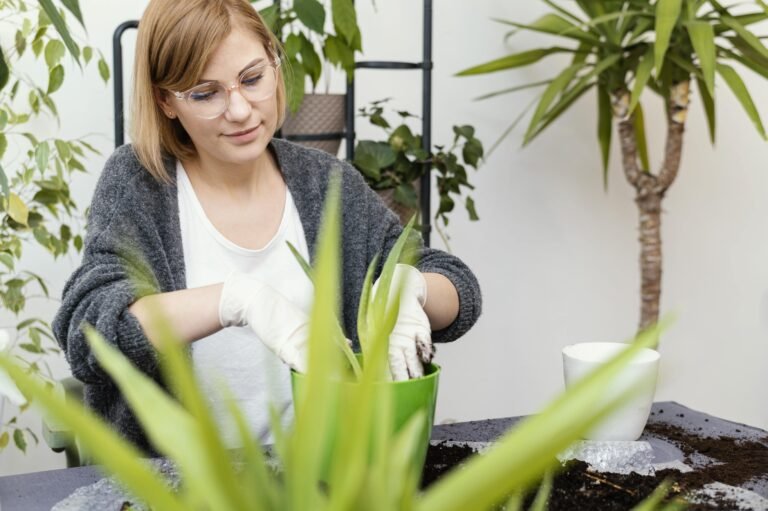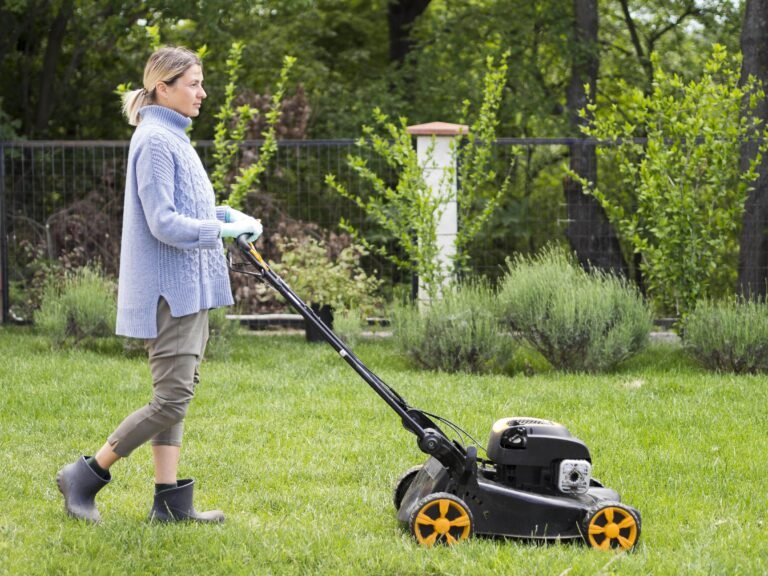How To Create A Low-maintenance Seasonal Garden?
You can design low-maintenance seasonal gardens so that you spend the least time and effort to make your outdoor space beautiful. Maybe you’re a professional with a tight schedule, a novice at gardening, or someone who doesn’t want to bother with garden work; still, you can have your comfortable garden, which will take care of itself and look wonderful all year round. With a careful selection of plants, adequate garden design, and clever gardening practices, you can keep your garden ever-changing and alive without having to devote endless hours.
This handbook considers some of the key things one does to establish and keep a garden, ensuring it remains low maintenance during seasons. From planting the right kind of plants and watering them the right way to handling soil, weed control, and many other practical tips, here you have everything you will need to help you develop a superb self-taking-care garden. Let’s jump in and find out how you can enjoy that beauty with the least hustle.
What is Seasonal Gardening?
Seasonal gardening is the practice of setting and keeping a garden in an infinite cycle of change and flux across the different seasons of the year. Unlike conventional gardening, which focuses on fixed displays of plants, seasonal gardening is designed to flow with the natural cycles of growth, bloom, dormancy, and regeneration. Choosing the right plants and planting garden activities to bring out the best in each season of the year will keep your garden vivid and enticing throughout the year.
A seasonal garden presents different beauties and challenges in each season. Spring is likely to bring in new growth, with bulbs emerging and perennials waking from their winter sleep. Summer means lush foliage and lots of flowers; autumn spells out a tapestry of fall foliage and late-season bloom. Winter can be quiet but still provides interesting features, such as evergreens, ornamental grasses, and plants with interesting bark or berries.
The key to successful seasonal gardening is to understand the needs and characteristics of plants in each season. This involves selecting species that will not only survive but also thrive in your local climate throughout the year. Additionally, seasonal gardening requires a bit of foresight and planning to ensure that the garden transitions smoothly from one season to the next without requiring extensive maintenance.
By embracing seasonal gardening, you can create a dynamic and ever-changing landscape that reduces the need for constant care. This approach not only enhances the aesthetic appeal of your garden but also promotes a healthy and sustainable environment, making it an ideal choice for gardeners seeking a low-maintenance yet beautiful outdoor space.
Planning Your Low-Maintenance Seasonal Garden
Planning is the key to a successful low-maintenance seasonal garden. A good plan makes sure your garden will grow well with little effort and still look beautiful all year round. Here’s how to start:
Assess Your Garden Space First, look at the physical features of your garden. Think about how much sunlight it gets, the type of soil, and how water drains. Notice any existing features like trees, slopes, or structures that might affect your garden design. Knowing these details will help you choose the right plants and layout for your garden.
Define Your Garden Goals Decide what you want from your garden. Do you want lots of flowers, a peaceful place to relax, or a space to grow vegetables? Knowing your goals will help you make choices that ensure your garden meets your needs and expectations.
Develop a Garden Design Draw up a garden plan, drawing in existing features and design concepts. Group your plants by water and sun requirements so that you can maintain them more easily. You may also want to consider adding walkways, built beds, and non-plant hardscaping such as a patio or sitting area to help reduce the number of square feet that must be maintained as yard space. Aim for beauty with function.
Choosing the Appropriate Plants Choose the right plants: Perhaps more than anything, the selection of plants is paramount for low-maintenance gardens. Opt for native plants and those that are adapted well to local climatic conditions and soil type. Such plants are normally hardier and need little care. Make sure you include evergreens, deciduous plants, and seasonal bloomers in the garden to add interest. Drought-tolerant species and slow-growing shrubs can further reduce the need for frequent watering and pruning.
Plan for All Seasons A good seasonal garden will have interest throughout the year. Think about a succession of blooms and foliage change through the growing season to give continual visual appeal. So use bulbs and early perennials in spring. Now, look forward to warm, summer days with flowers and rich green foliage. Toward autumn, choose plants that feature brilliant fall colors. For a winter garden, add evergreens and plants with interesting textures or berries.
Integrate Sustainable Practices Use sustainable practices to reduce work and promote a healthy garden ecosystem. This may include composting, organic mulching, and water-efficient systems or irrigation. In addition to saving time and resources, sustainable practices enhance the long-term health of your garden.
Plan for Maintenance While maintenance of your landscape should be minimal, some features can’t be avoided. Have a simple maintenance program of frequent inspections, seasonal tasks, and periodic touch-up work to cope with matters discovered before they become serious. Planning a low-maintenance seasonal garden is so rewarding, for you have created an outdoor living space that brings joy and satisfaction throughout the year. Thoughtful planning will ensure your garden is capable of looking after itself with minimum effort on your part, allowing you to enjoy Mother Nature without the headache of high upkeep.
Choosing the Right Plants To Create A Low-maintenance Seasonal Garden
Selecting the right plants is fundamental to creating a low-maintenance seasonal garden that flourishes year-round. Here’s how to make smart choices:
Take Into Account Local Climate and Conditions Start with plants that grow well in your local climate, soil type, and sun exposure. Native plants are usually adapted well to local conditions and require little extra care once established. Pick plants that are robust in your USDA hardiness zone so they can survive temperature swings and changes in season.
Select Perennials and Native Plants Perennials are plants whose life span is more than two years; they come back with the seasons, and you do not have to replant them. They are an excellent choice for low-care gardens, as they usually require less water and care than annuals. Native plants have gone through evolution and are readily adapted to conditions locally, which in turn makes them tolerant and fairly suitable in general to your garden ecosystem.
Choose Plants with Long Bloom Periods Choose plants that can bloom or are somehow interesting during spring and summer months, or, more specifically, throughout the whole year. Not only will selecting species that can bloom in between these months add color, but it will also attract bees and butterflies to pollinate various plants, bringing out the colors not only for aesthetic purposes but also for the environment.
Incorporate Evergreens and Structural Plants Evergreen shrubs and trees provide year-round structure and interest to your garden. Choose varieties with interesting foliage textures and colors for visual contrast and depth. Structural plants, such as ornamental grasses or architectural plants like yuccas or agaves, add drama and require minimal care once established.
Add Drought-Tolerant Species Design your garden with drought-resistant plants to reduce the need for frequent watering. Great choices for low rainfall areas are succulents, lavender, ornamental grasses, and Mediterranean herbs. These plants store water in their leaves or roots, making them resilient during dry spells.
Avoid Invasive Species Be careful of invasive plants that can spread rapidly and outcompete native flora. Contact your local Cooperative Extension office or garden center for a list of invasive plants to avoid. Using non-invasive plants helps maintain the balance of your garden’s ecosystem, reducing the need for intensive management.
Consider Maintenance Requirements Evaluate maintenance needs for each plant before including them in the garden. All plants need some level of care, but by choosing species that require minimal deadheading, pruning, and pest control, the overall garden will need less time and effort to maintain.
Plan for Seasonal Interest Choose a diverse plant palette that offers interest in all seasons. Mix early bloomers for spring, heat-tolerant plants for summer, plants with vivid foliage for fall, and evergreens for winter appeal. This way, the garden will look interesting and engaging all year round.
Choosing the right plants is important for creating a low-maintenance garden that thrives with minimal effort. By selecting species suited to your climate and soil conditions, you can enjoy a beautiful, sustainable garden that enhances your outdoor space year-round.
Soil Preparation and Mulching for Creating A Low-maintenance Seasonal Garden

Preparing the soil and using mulch are essential steps in establishing a low-maintenance seasonal garden that promotes plant health and reduces the need for frequent watering and weeding. Here’s how to get started:
Test and Amend Your Soil Begin by testing your soil to check its pH level and nutrients. Most plants grow well in soil that is slightly acidic to neutral (pH 6.0-7.0). Improve the soil by adding organic matter like compost, well-rotted manure, or leaf mold. This makes the soil better for growing plants by improving its structure, fertility, and drainage.
Incorporate Organic Matter Add organic matter to the soil to give it nutrients and help it hold moisture. Mix compost or aged organic materials into the top few inches of soil before planting. This helps good soil organisms and improves the long-term health of your garden plants.
Choose the Right Mulch Put a layer of mulch around plants to keep soil moisture, stop weeds, and control soil temperature. Organic mulches like shredded bark, wood chips, or straw break down over time and add organic matter to the soil. Inorganic mulches like gravel or landscape fabric can also be used, especially in areas where keeping moisture is important.
Put Down Mulch Properly Spread mulch in a 2-3 inch layer around the plants, with a small gap between the stems to avoid diseases due to excess moisture. Each year, as the mulch decomposes, you should add more. Mulching not only decreases water evaporation but also inhibits the growth of weeds by reducing the amount of sunlight that reaches the seedlings and the germination of weed seeds.
Try Mulching with Mulch Mulch around perennials helps level out soil temperature, protects roots from sudden freezes or thaws, and reduces heaving in the soil during winter. For perennials, apply a thicker layer of mulch after the ground has frozen in late fall.
Avoid Over-Mulching Though helpful, it is recommended not to over-mulch, as it can suffocate plant roots by creating a barrier that restricts the supply of water and air into the soil. Maintain a balance by using 2-3 inches of mulch and avoiding the base stems and trunks of plants to prevent moisture-related diseases.
Use Mulch for Aesthetic Purposes Mulch adds a finishing touch to your garden beds and enhances the overall look of your landscape. Select the color and texture of mulch that will enhance and complement the features of your garden, providing interest year-round.
Monitor Soil Moisture Monitor the soil moisture, especially in times of heat and drought. Mulch will help to maintain moisture, but the plants should be watered deeply to get their appropriate supply of hydration. Use a soil moisture meter or stick your finger into the soil to check if watering is needed.
By preparing the soil properly and applying mulch correctly, you can create a thriving and resilient garden environment that requires very little maintenance. These practices not only help to grow your plants but also ensure the sustainability of your low-maintenance seasonal garden over the years.
Efficient Watering Techniques To Create A Low-maintenance Seasonal Garden
Efficient watering practices are important for managing a seasonal garden that is low in effort, saves water, and protects plant health. Here are some efficient ways to ensure your garden gets just the right amount of moisture with minimum fuss:
- Soaker hoses: These leaky pipes slowly drip water onto your plants’ roots, perfect for big gardens. You can even set them on a timer to water automatically.
- Early morning or evening watering: Water your plants when it’s cooler, like early in the morning or in the evening. This prevents water from evaporating quickly in the hot sun.
- Deep watering: Give your plants a long drink less often, instead of little sips all the time. This encourages roots to grow deep and strong, so they can better handle dry spells. Aim for 6-8 inches of water penetration for most plants.
- Mulch: Cover the soil around your plants with mulch, like straw or leaves. This helps keep the soil moist for longer and prevents weeds.
- Check soil moisture: Stick your finger in the soil near the roots. If the top inch feels dry, it’s watering time! Don’t overwater though!
- Rainwater harvesting: Collect rainwater in barrels to use on your plants. Rainwater is free and gentle on plants, unlike tap water.
- Group plants by water needs: Plant flowers and vegetables that need similar amounts of water together. This way, you can water them all at once without drowning some or leaving others thirsty.
By following these tips, you can keep your garden healthy and beautiful while saving water and time!
Simplifying Garden Maintenance for Creating A Low-maintenance Seasonal Garden
Want a gorgeous garden without all the work? This guide will show you how to make your seasonal garden low-maintenance, meaning it takes less time and effort to keep it looking its best. Read on for some easy tips!
- Make a Garden To-Do List: Write down what needs to be done each season, like planting seeds, adding mulch, watering, trimming, and feeding plants. This keeps you organized and your garden healthy.
- Mulch Magic: Cover the soil with something like straw or leaves. This helps keep moisture in the ground, stops weeds from popping up, and makes the soil healthier. Add more mulch every year, especially in spring and fall.
- Say No to Harsh Chemicals: Instead of using strong sprays, try natural ways to keep pests and diseases away. Look for bugs that eat the bad ones, pick off pests by hand, or use sprays made from things like neem oil.
- Pull those Weeds: Keep an eye out for weeds and get rid of them quickly. You can pull them up by hand or use a small tool to disturb them before they get too strong and steal water and food from your plants.
- Snip, Snip, Snip: Trimming your plants helps them grow healthy and strong, and makes them look good too! Cut off dead branches, shape bushes, and remove leaves that are crowded or overgrown. Remember to research the best time of year to trim different plants.
- Raised Beds & Pots: Planting in raised beds or pots can be easier to manage. Raised beds have better drainage and fewer weeds, and you can control the soil quality better. Pots let you move plants around and make it harder for pests and diseases to spread.
- Let Technology Help: Invest in tools that make gardening easier, like watering systems with timers or a hose reel that automatically rewinds. These save you time and keep your plants well cared for.
- Keep Your Stuff Organized: Take care of your gardening tools so they last longer and are ready when you need them. Clean them after use, sharpen them sometimes, and store them in a designated spot. Keep other supplies like fertilizer, mulch, and plant supports organized so you can find them easily.
- Plant Check-Ups: Regularly look at your plants to see if they’re stressed, have a disease, or need extra nutrients. If something’s wrong, adjust how you water them, add some fertilizer, or take other steps to help them thrive.
By following these tips, you can have a beautiful garden with less work! These practices not only save you time but also keep your garden healthy and happy.
Sustainable Practices for Long-Term Success
Want a garden that thrives with less work and helps the environment? Read on to learn some key sustainable practices that will keep your seasonal garden healthy and beautiful for years to come!
- Make Your Plant Food: Turn leftover food scraps, yard waste, and garden trimmings into compost! This “plant food” nourishes your soil and helps it hold moisture.
- Water Wisely: Use tools like drip irrigation or soaker hoses to save water. Collect rainwater in barrels to water your plants later. Water early in the day or evening to avoid wasting water through evaporation. Mulch your garden beds to keep moisture in the soil.
- Plant Smart: Choose plants that naturally thrive in your area. These plants need less water, fertilizer, and bug spray. They also attract helpful creatures like butterflies and bees!
- Fight Bugs the Natural Way: Instead of using harsh chemicals, get rid of pests with traps or natural predators like ladybugs.
- Reduce Your Lawn: Lawns take a lot of work and water! Consider replacing some of your lawn with colorful ground covers, native grasses, or even a patio.
- Keep Your Soil Healthy: Don’t dig up your soil too much. Use mulch to prevent erosion and weeds. Rotate your vegetable crops to keep the soil healthy. Add compost regularly to keep the soil fertile.
- Garden Green: Use recycled materials like mulch and repurposed wood for raised beds. Choose natural stones or gravel for walkways.
- Keep Learning: Research sustainable gardening and join gardening groups to learn more! Share your knowledge with others to spread the word about eco-friendly gardens.
- Welcome Wildlife: Plant a variety of native plants to attract helpful insects and birds. These creatures help control pests and pollinate your flowers!
By following these sustainable practices, you can create a beautiful garden that takes less work and helps the environment. These tips promote a healthy balance in nature, save resources, and make your garden a thriving oasis!
In conclusion
Making a low-maintenance garden is like a fun puzzle! You need to plan it out, choose the right plants, and take care of the environment.
By following these steps, you can create a beautiful garden that changes with the seasons and takes less work to keep looking good:
- Plan your garden: Decide where things will go and pick plants that thrive in your area.
- Water wisely: Use soaker hoses or drip irrigation, and water in the morning or evening. Put down mulch to help the soil hold moisture.
- Simplify maintenance: Make a compost bin, use raised beds or pots, and keep your tools organized.
- Help the environment: Choose native plants, attract helpful insects and birds, and use recycled materials.
These tips work for both beginners and experienced gardeners. With a low-maintenance garden, you can enjoy the outdoors without spending all your time on chores. It’ll be a beautiful space you can relax in for years to come!
FAQs
What is a low-maintenance seasonal garden?
A low-maintenance seasonal garden is designed to thrive throughout the year with minimal effort. It focuses on selecting plants that are well-suited to your local climate and soil conditions, reducing the need for constant watering, pruning, and pest control.
How do I start planning a low-maintenance seasonal garden?
Begin by assessing your garden space and considering factors like sunlight, soil type, and drainage. Plan a layout that groups plants with similar water and sunlight needs together to simplify care and maintenance.
What are the best plants for a low-maintenance seasonal garden?
Choose native plants and perennials that are adapted to your region’s climate. These plants require less water and maintenance once established. Incorporate evergreens for year-round structure and plants with long bloom periods for continuous color.
What are some tips for efficient watering in a seasonal garden?
Install drip irrigation or soaker hoses to deliver water directly to plant roots and reduce water waste. Water early in the morning or late in the evening to minimize evaporation, and mulch garden beds to retain soil moisture.
How can mulching help maintain a low-maintenance garden?
Mulch helps conserve soil moisture, suppress weeds, and improve soil health. Apply a layer of mulch around plants to reduce the need for watering and minimize weed growth. Replenish mulch annually to maintain its effectiveness.







